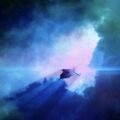Our illusion of superiority relative to nature is unwarranted. I am often reminded of this as I jog at sunrise each day, and that we should not take nature for granted.
Even though birds knew long ago how to fly by flapping their wings, starting with the Archaeopteryx lithographica 150 million years ago, the Wright Brothers accomplished the first powered human flight in 1903, just 120 years ago – the last percent of a percent of human history.
The latest technology that we boast about is artificial intelligence (AI) of Large Language Models (LLMs). But training a single LLM like ChatGPT-3, consumes a power of up to 10 gigawatt-hour (GWh), equivalent to the yearly electricity consumption of over 1,000 U.S. households.
For comparison, the human brain operates on a power budget of about 12 watts, an order of magnitude lower than a typical desktop or a common light bulb. Instead of the giant computer rooms used to operate LLMs, the human brain is stored in a compact enclosure, limited by the physical scale of the birth canal during delivery.
Our pride in remotely operating technological gadgets is flagshipped by the Perseverance Rover or the Ingenuity helicopter on Mars, which are operated by engineers at the Jet Propulsion Laboratory in Pasadena. This feels like helicopter parenting. In contrast, the dandelion flower does not send guidance to its seeds after they get carried by the wind to remote locations. These seeds function autonomously, fulfilling their mission of planting the dandelion genetic materials in fertile grounds.
We are yet to develop autonomous self-replicating probes that carry AI astronauts with 3D printers and could seed remote exo-planets with lifeforms out of the raw materials and nutrients they find on the surface. Rather than carry lifeforms from planet Earth to interstellar space, this would constitute an energy-efficient way of replicating the genetic information content we wish to promote in the Milky Way galaxy.
So far, we launched probes to Mars at a huge effort, but a third of a percent of the classified meteorites on Earth are Martian rocks. It is possible that life started on Mars, and some of these rocks delivered microbes as the first interplanetary astronauts in the solar system. In that case, Elon Musk’s ambition of creating a multi-planetary species might have been already accomplished naturally billions of years ago by ego-less lifeforms.
Life-as-we-know-it requires light which has been shining on Earth for 4.6 billion years thanks to a nearby fusion reactor, the Sun. Yet, only last year were humans able to imitate the Sun and achieve the first nuclear fusion breakthrough with a blast of 192 lasers at the National Ignition Facility of the Lawrence Livermore National Laboratory.
We are yet to develop a self-healing car that would repair its bumps after minor car accidents. We are yet to develop a 3D printer that makes 3D printers out of raw materials that it finds in the wilderness. But our bodies do all of that: we naturally recover from superficial wounds and we procreate by consuming nutrients from our natural habitat.
Some scientists err in believing that we are superior to nature, so much so that we can figure it out before looking at it. This may be true in the metaverse (or the multiverse) but not in the physical reality that we all share. There, we are obliged to learn from observing nature through the scientific analysis of experimental data. Although I started my career as a theoretical physicist, I recently led an experimental project to retrieve materials from the first recognized interstellar meteor, IM1, that exploded over the Pacific Ocean in 2014. The expedition I led retrieved more than 700 spherules from the ocean floor, each weighing less than a milligram. Rather than insist that everything in our sky is solar-system stones, we must allow nature to inspire us by analyzing interstellar objects through mass spectrometers and electron microscope imagers. Humility is a prerequisite for learning something new.
As noted by Henry D. Thoreau, “Nature is full of genius, full of the divinity; so that not a snowflake escapes its fashioning hand.” Stay tuned for the expedition results.
Avi Loeb is the head of the Galileo Project, founding director of Harvard University’s – Black Hole Initiative, director of the Institute for Theory and Computation at the Harvard-Smithsonian Center for Astrophysics, and the former chair of the astronomy department at Harvard University (2011-2020). He chairs the advisory board for the Breakthrough Starshot project, and is a former member of the President’s Council of Advisors onScience and Technology and a former chair of the Board on Physics and Astronomy of the National Academies. He is the bestselling author of “Extraterrestrial: The First Sign of Intelligent Life Beyond Earth” and a co-author of the textbook “Life in the Cosmos”, both published in 2021. His new book, titled “Interstellar”, is scheduled for publication in August 2023.

